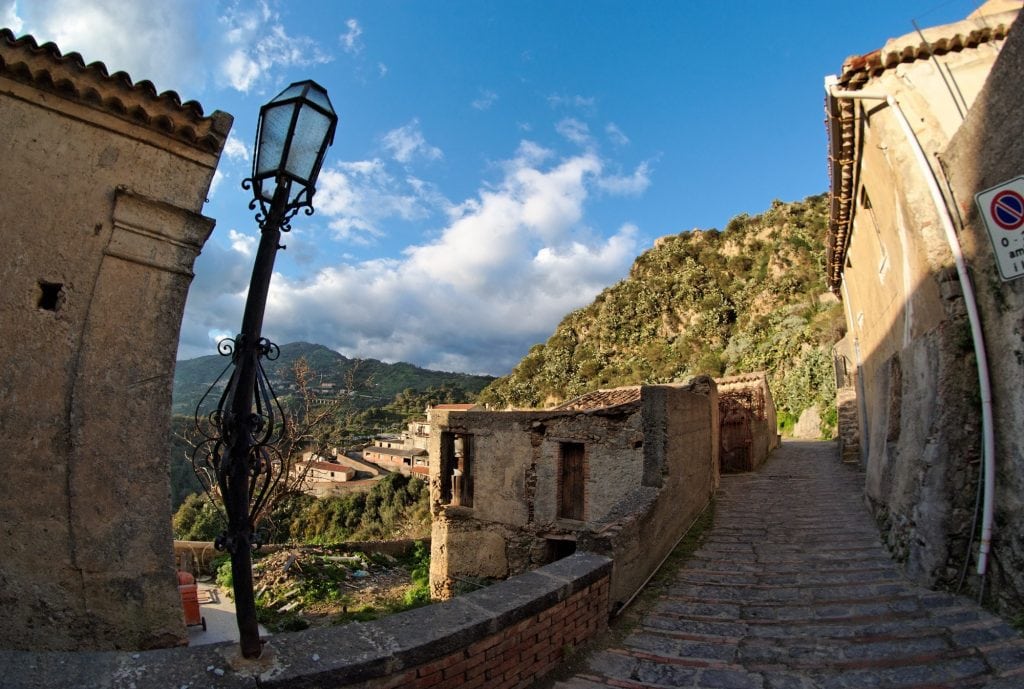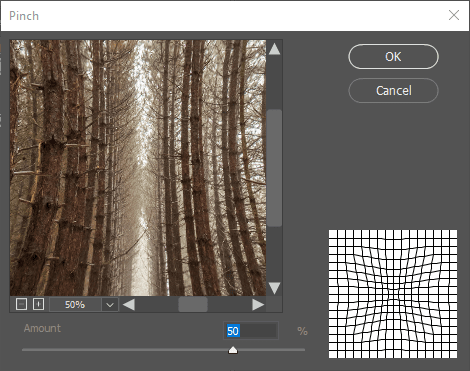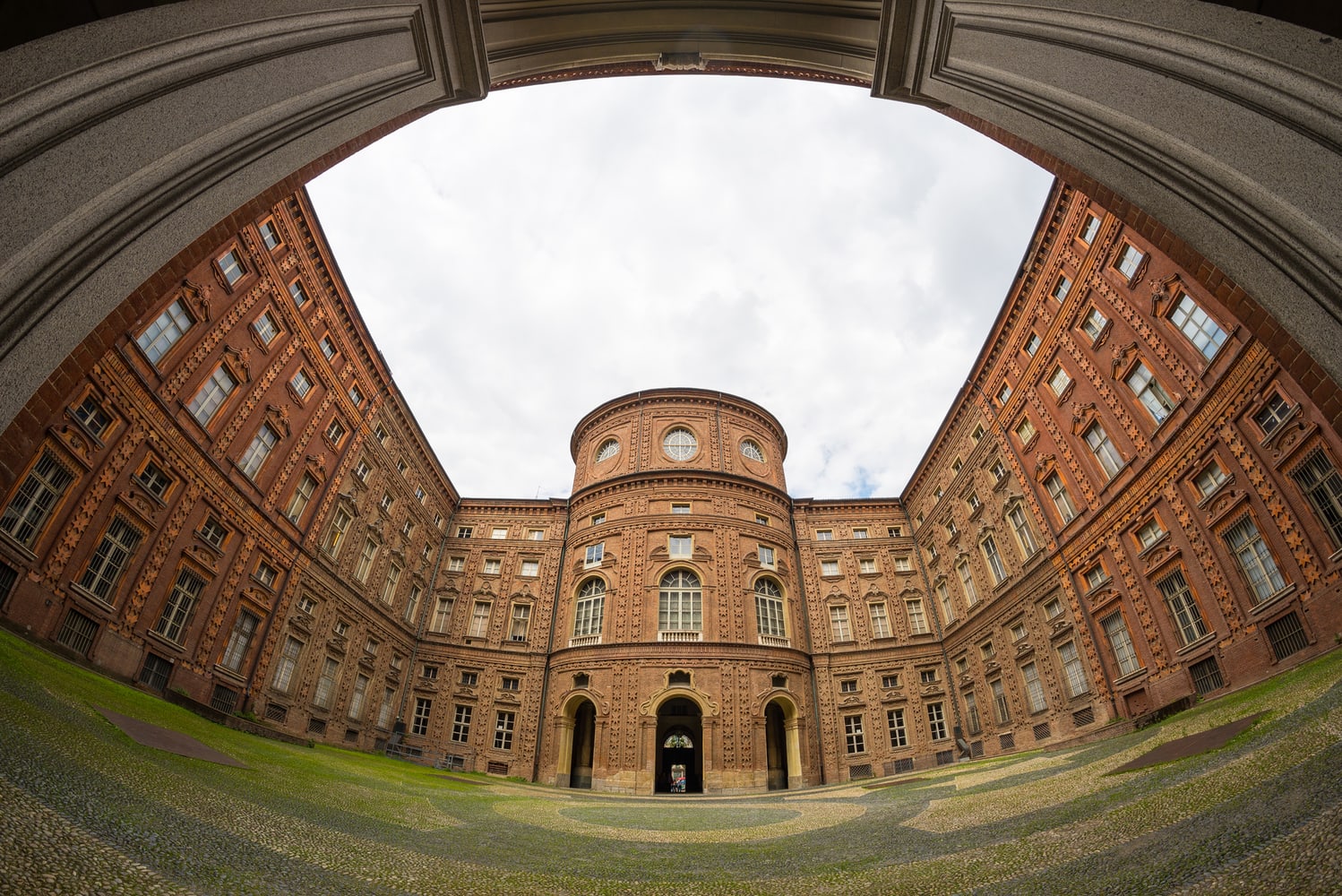If you’ve ever noticed a warped appearance in a photo, particularly in the corners, you saw distortion. In other words, distortion refers to a visual deformation of images.
There are two types of distortion: optical and perspective. In photography, it’s important to know the difference between the two so that you can either use them to your advantage creatively or avoid distortion altogether if you wish to do so.
So if you were wondering, “what is distortion in photography?” we go over the types of distortion, causes, and how to fix it in this article.
What Is Lens Distortion in Photography? (Optical Distortion)
Optical distortion, also known as lens distortion, arises due to the optical design of a lens. Very few lenses don’t have at least some degree of distortion, although some have much more apparent distortion than others. Lens distortion is a lot more common in wide-angle lenses, for example.
There are three types of lens distortions: barrel, pincushion, and mustache.
Barrel Distortion

This sort of lens error is known as “barrel distortion,” It occurs when straight lines are curved inwards as you would see on a barrel.
In wide-angle lenses, barrel distortion is common because the field of vision is significantly broader than the image sensor’s resolution. As a result, the lens must be “squeezed” to suit the image sensor. A direct outcome of this is that straight lines appear to be noticeably curved inwards, especially around the edges of the frame.
Most wide-angle prime and zoom lenses and other short focal lengths exhibit barrel distortion. The level of distortion varies based on the distance between the camera and the subject.
Compensating optical components can considerably reduce barrel distortion, although it’s virtually impossible to totally eliminate barrel distortion. These distortion compensation features can be very effective, but it increases a lens’s weight and size. As a result, wide-angle lenses are often larger and heavier than standard / normal lenses to compensate.
Pincushion Distortion

Pincushion distortion is the opposite of barrel distortion in that it causes straight lines to be bent outwards from the center rather than inwards.
Pincushion distortion is typical of telephoto lenses. It happens due to the magnification of the margins of the frame compared to the center, the optical axis.
In this case, the field of vision is much smaller than the image sensor and thus must be “stretched” to fit. Because of this, straight lines appear to be dragged upwards at the corners.
Pincushion distortion is a relatively typical aberration, particularly when using zoom lenses. Pincushion distortion can be reduced to minimal levels by compensating elements, more commonly found in high-end telephoto prime lenses. However, most consumer and even professional-level zoom lenses produce visible pincushion distortion.
Mustache Distortion (Wavy/Complex)
The worst and most complicated to deal with of the radial distortion forms is mustache distortion, which you may hear some call “wavy” or “complex” distortion. It’s essentially a mix of barrel distortion and pincushion distortion in structure.
Mustache distortion is characterized by straight lines that appear to be curving inwards to the center of the frame and then curving outwards towards the extreme corners of the frame.
This is one of the reasons why mustache distortion is sometimes referred to as “complicated” distortion because its features are complex and may be pretty uncomfortable to cope with when it occurs.
While it is possible to correct this form of distortion, it’s more challenging to deal with. If you have a lens with mustache distortion with a Lightroom profile, it usually won’t be an issue. But if you’re using an older lens that isn’t supported, that can present challenges.
If you try to address mustache distortion as if it were barrel-type distortion, you distort the corners even more. Furthermore, if you attempt to compensate for mustache distortion as if it were pincushion distortion, you’ll end up with even more extreme distortion in the center of the image.
Mustache distortion is more commonly seen in older lenses, although not all modern lenses are immune.
Perspective Distortion

Perspective distortion is another sort of distortion that is frequently seen in photographs. In contrast to optical distortion, it doesn’t have anything to do with the structure of the lens. Therefore, it’s not considered an error due to some sort of defect with the lens.
A subject close to the camera can look really big or deformed, as it’s a three-dimensional space and objects being projected into a two-dimensional image. It’s the same thing we see with our own eyes: when we bring an object up close to our eyes, it looks bigger, and other things in our field of vision look smaller in relation.
Lenses that Have the Most Distortion
Wide-angle lenses have the most visible barrel distortion, particularly in the corners.
Telephoto lenses also suffer from distortion, but they’re more known for pincushion distortion.
Rectilinear and Curvilinear Lenses
Lenses are optically engineered to be either rectilinear or curvilinear.
Rectilinear lenses produce straight lines that don’t warp, similar to human vision. Instead, rectilinear lenses stretch things to make them look straight, especially when they’re at the edges of the frame.
On the other hand, other lenses, such as “fisheye” lenses, are optically designed to be curvilinear. Curvilinear lenses distort images by bending straight lines.
When to Use Distortion
Distortion isn’t always bad, and it can be used tastefully. But, unfortunately, there aren’t any hard and fast rules on when to use distortion, as it’s a creative choice.
Pincushion distortion on longer lenses can be used effectively for a more flattering perspective for portraits. On the other side of the spectrum, you can use the distortion of wide-angle lenses creatively for portraits.
Another scenario where distortion is very much welcome in photography is real estate. For example, wide-angle lenses can make a home look more spacious and inviting.
How to Avoid Distortion
If you want to avoid lens distortion, your options are to either use a lens with minimal lens distortion or correct the distortion in post. Most modern lenses have reasonable levels of distortion that can easily be corrected in your photo editing software of choice.
You can also avoid distortion as you’re photographing. The main thing is not getting too close to your subjects, especially with wide-angle lenses. Also, keep in mind that the corners will distort the most, so avoid framing them in the corners if you don’t want subjects to be distorted.
Using Post Processing to Fix Distortion
Correcting barrel distortion is a rather simple fix to perform in most cases. As long as the lens has a supporting profile in the database, post-processing software like Lightroom can quickly correct barrel distortion.
Like barrel distortion, you can easily fix pincushion distortion in post-processing software such as Lightroom and CaptureOne. In addition, you can entirely eradicate it with a single click in many photo editing tools, thanks to lens profiles included in the software.
Conclusion
In summary, distortion results from lens distortion (warping of an image due to flaws in a lens’ design) and perspective distortion.
As a photographer, you can control distortion through either lens selection or the distance at which you photograph subjects.
You can intentionally use distortion as an artistic/creative choice, but you can always remove it in post-processing if you don’t want distortion.



